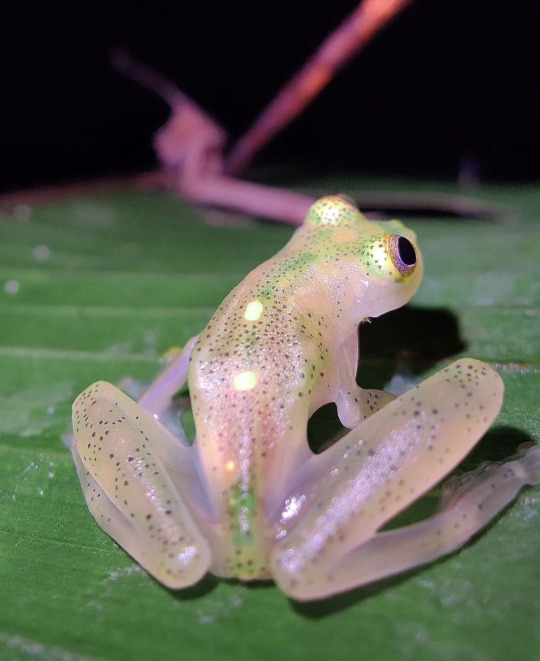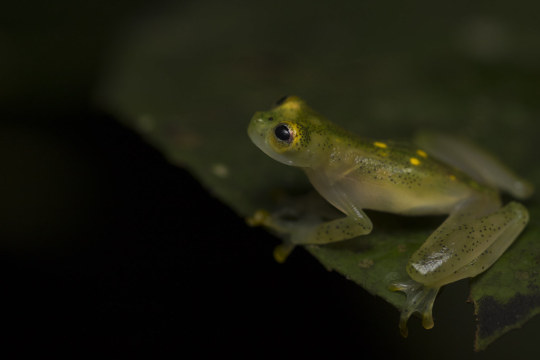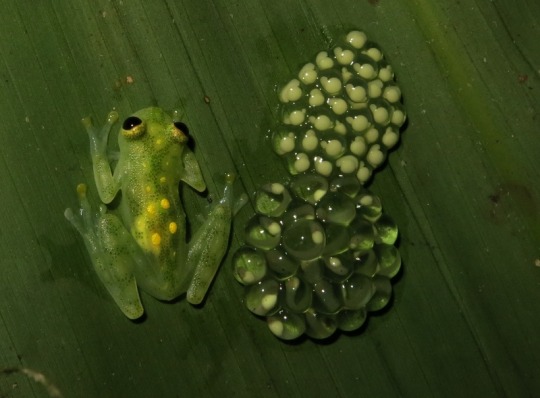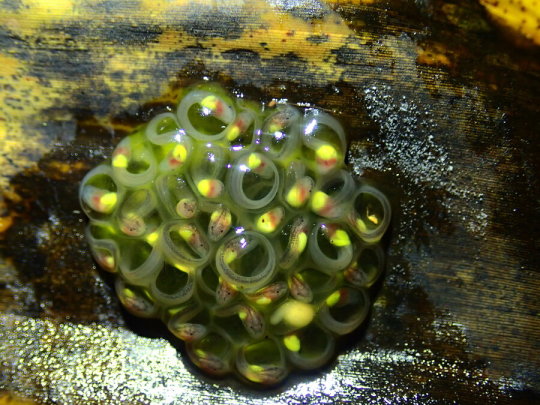#Hyalinobatrachium aureoguttatum
Explore tagged Tumblr posts
Text



Atrato Glass Frog / Sun Glassfrog photographed by nuqui_herping
#Hyalinobatrachium aureoguttatum#glass frog#sun glassfrog#atrato glass frog#Centrolenidae#ecuador#frog#amphibian#science#nature#wildlife#photography
12K notes
·
View notes
Text

Hyalinobatrachium aureoguttatum
#atrato glass frog#sun glass frog#Hyalinobatrachium aureoguttatum#wikipedia#wikipedia pictures#nature#animals#frogs#froggy#herpetology#herpblr#frogblr#frog#frogcore#frog eggs#herpetofauna#wikimedia commons#amphibia#amphibians#anura#centrolenidae#glass frog#glass frogs
363 notes
·
View notes
Text

Sun Glassfrog (Hyalinobatrachium aureoguttatum), male with eggs, family Centrolenidae, Colombia
photograph by Yuji Abematsu
1K notes
·
View notes
Text

Atrato glass frog (Hyalinobatrachium aureoguttatum) by Keeping Nature Tours
#nature photography#wildlife#wildlife photography#fauna#frogs#amphibians#herpetology#lensblr#curators on tumblr
44 notes
·
View notes
Photo

Hyalinobatrachium aureoguttatum, source: x
#Anura#Centrolenidae#Hyalinobatrachium#Hyalinobatrachium aureoguttatum#frog#frogs#animal#animals#biology#nature#wildlife#amphibian#amphibians#zoology#herpetology#herps#fauna#critter#critters
43 notes
·
View notes
Text

A male Atrato Glass Frog (Hyalinobatrachium aureoguttatum) taking care of the egg mass during a humid night in the Ecuadorian Chocó by Javier Aznar
11 notes
·
View notes
Photo


The eggs of the sun glass frog [Hyalinobatrachium aureoguttatum] displaying visible embryo development. Female sun glass frogs lay approximately 35 eggs, which are fertilized and guarded by the male. The eggs are deposited on leaves which hang over a water source, so that the tadpoles fall into the water upon hatching. Images by Laura Bravo Valencia and Amadeus Plewnia.
588 notes
·
View notes
Photo

Hyalinobatrachium aureoguttatum
A species of glass frog in the Centrolenidae family.
0 notes
Text

Sun Glassfrog (Hyalinobatrachium aureoguttatum), father with eggs (attached to leaf above stream), family Centrolenidae, Valle del Cauca, Colombia
Photograph by Heiler Uribe Parra
451 notes
·
View notes
Text




Atrato Glass Frogs (Hyalinobatrachium aureoguttatum), family Centrolenidae, Valle de Cauca, Colombia
photographs by Juan José Ramírez
404 notes
·
View notes
Text

A male Atrato Glass Frog (Hyalinobatrachium aureoguttatum)
singing during a humid night in the Ecuadorian Chocó by Javier Aznar
10 notes
·
View notes
Photo




Macro images of frog skin, prepared by Diego Acosta Lopez for Centro Jambatu. In order, we see the Pacific horned frog [Ceratophrys stolzmanni], the Atrato glass frog [Hyalinobatrachium aureoguttatum], the Imbabura tree frog [Hypsiboas picturatus], and the silver marsupial frog [Gastrotheca plumbea].
#frogs#pacific horned frog#Surinam horned frog#atrato glass frog#glass frog#imabura tree frog#tree frog#silver marsupial frog#marsupial frog#frog#herps#amphibians#animals#nature#macro
2K notes
·
View notes